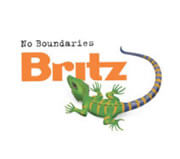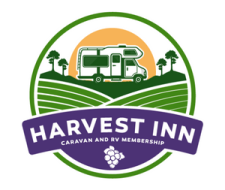Absolutely, totally out of this world. There is no other way to describe Kakadu. You honestly have to keep reminding yourself you are still in Australia. This is the absolute number 1 place that should be on everyone’s bucket list.
To be completely, honest I actually don’t have the words to describe how fantastic Kakadu is. There is so much to see and do, so much history – over 50,000 years of Aboriginal history! And you can really get hands on and up close with the wild.
We hired a Lets Go Motorhome from Darwin, a 6 berth too so it had lots of room for all 4 of us. The kids get extremely excited when we pull into the depot – it’s the holiday home on wheels!
Apart from the amazing aboriginal history and culture that Kakadu is built on, there is also the fun & action filled adventure trips that include crocodiles. I decided that we should all go Croc Hunting ……. at night. It sounded like a decent idea at the time! So out we head, in what I would call a glorified tinnie, but hey these guys have been in business for 17 years so they must be doing something right! As we set off from the jetty, the terror quickly started to set in, just like the consuming darkness of the night. The guides are second to none, very informative and with top-notch hospitality. However he did forget to mention that at certain times of year they have a type of flying fish. So as I sat in the bow of the boat helping out with the torches to get the first glimpse of these amazing Jurassic like crocodiles, a flying fish leaped into the front of the boat and on to my leg – Sheree will tell you “he screamed like a baby” and while yes I was terrified to within an inch of my life I did eventually see the hilarious side to it. At the time though, in my mind I was in the jaws of a man-eating crocodile!
This is a definite must see, you get up-close and personal with the crocs, spot them with the torch and watch them scurry into the water. They are both fascinating as well as terrifying, but your Guides here in Kakadu ensure your safety at all times and it was definitely my highlight of the trip.
Covering just short of 20,000 square kilometres of the most stunning natural beauty Kakadu is one of very few places that is World Heritage listed for both nature & culture. It is a timeless place, home to 69 mammals, more than 120 reptiles, 26 frogs, more than 2,000 plants and over 10,000 species of insects!
Base yourself in the Jabiru Township at the Aurora Resorts, Kakadu Lodge Holiday Park. It’s a great place, awesome swimming pool and a tonne of room for the kids to run around. Their amenities are top notch and the sites are roomy too which you gives you plenty of room for chairs, a gazebo and all the kids bikes and toys. From Jabiru you can explore Kakadu in her entirety, it’s a good central place to experience it all from. Jabiru has all services you will require too, petrol station, chemist, newsagents and supermarket.
After 2 nights there we jump across the National Park to Yellow River and stay at Cooinda Lodge Campground – the most amazing holiday park ever! From powered sites to Glamping safari tents to cabins, they have it all!
Next on the agenda was to see the Aboriginal Art that are 1000’s of years old. So much to learn, see and do!
The first port of call for everyone going to Kakadu is the Bowali Visitor Centre (open 8am-5pm every day) This centre contains an enormous amount of information about Kakadu’s natural heritage including plants, animals, cultural history and park management information. It is also a vital stop for the latest updates on road conditions, wet season access and information about things to see and do. It’s like your one stop shop! Plan to stay at the Bowali Information Centre for at least an hour, to ensure you get all the information you will need to see Kakadu to its full potential.
The name ‘Kakadu’ comes from an Aboriginal floodplain language called Gagudju, which was one of the languages spoken in the north of the park at the beginning of the twentieth century. Although languages such as Gagudju and Limilngan are no longer regularly spoken, descendants of these language groups still live in Kakadu today.
Mimi spirits were the first of the Creation Ancestors to paint on rock. At the end of their journeys, some Creation Ancestors put themselves on rock walls as paintings and became djang (dreaming places). Some of these paintings are andjamun (sacred and dangerous) and can be seen only by senior men or women but others can be seen by anyone. The number one rule is always to ask permission and always have a guide with you. The whole of Kakadu is sacred, so please respect the local Aboriginal owners of this sensational place. Feel lucky that they allow us to experience it. Kakadu’s rock art paintings represent one of the longest historical records of any group of people in the world! More than 5,000 art sites tell of the Creation Ancestors and the changes in the landscape over thousands of years.
Within the vast landscapes of Kakadu, there are 6 main Floodplain & Monsoon forests. They occur in small, isolated patches. Fruit-eating birds and flying foxes link the plants in these isolated pockets by dispersing pollen and seeds as they move around. The hills and broken ridge lines in the south of Kakadu are the result of millions of years of erosion, creating a diversity of habitats and the presence of plants and animals that do not occur anywhere else. Almost 500 square kilometres of coastal and estuarine areas, most lined with mangrove forests, form important nurseries for many fish including the world famous barramundi. Kakadu’s wetlands, including floodplains, billabongs, rivers, coastal and estuarine areas, are recognised internationally as being significant for migratory birds. Woodlands make up nearly 80 per cent of Kakadu. Consisting mostly of eucalypts and tall grasses, they may seem lifeless at first look. However, the woodlands support a greater variety of plants and animals than any other habitat in Kakadu. Floodplains undergo dramatic seasonal changes. Following wet season rains, a sea of shallow freshwater spreads over the plains for hundreds of square kilometres. As the floodplains start to dry, waterbirds and crocodiles seek refuge in them. Throughout the year, Kakadu’s landscapes undergo spectacular changes. The Bininj/Mungguy people recognise up to six different seasons, as well as subtle variations that signpost the transition from one season to another.
Each day we learnt something incredible, each day we experience something exceptional. Kakadu will never cease to amaze me and out of the 127,000kms we have travelled around Australia over the past 6 years, Kakadu will always remain my number 1. You could definitely spend more than a week holidaying here. And remember Kakadu is 2wd accessible too, so you don’t need a 4wd or big rig to get around. Kakadu is there for everyone to enjoy, no matter what you are travelling in, so what are you waiting for? Get out there and experience one of the most sacred places on earth.
TRAVEL TIP:
- Plan to stay at least 5 days
- First stop must be the Bowali Information Centre
FAST FACTS:
* The park is a Commonwealth Reserve, nearly 20’000 square kilometres in size and includes the traditional lands of several Aboriginal tribes.














